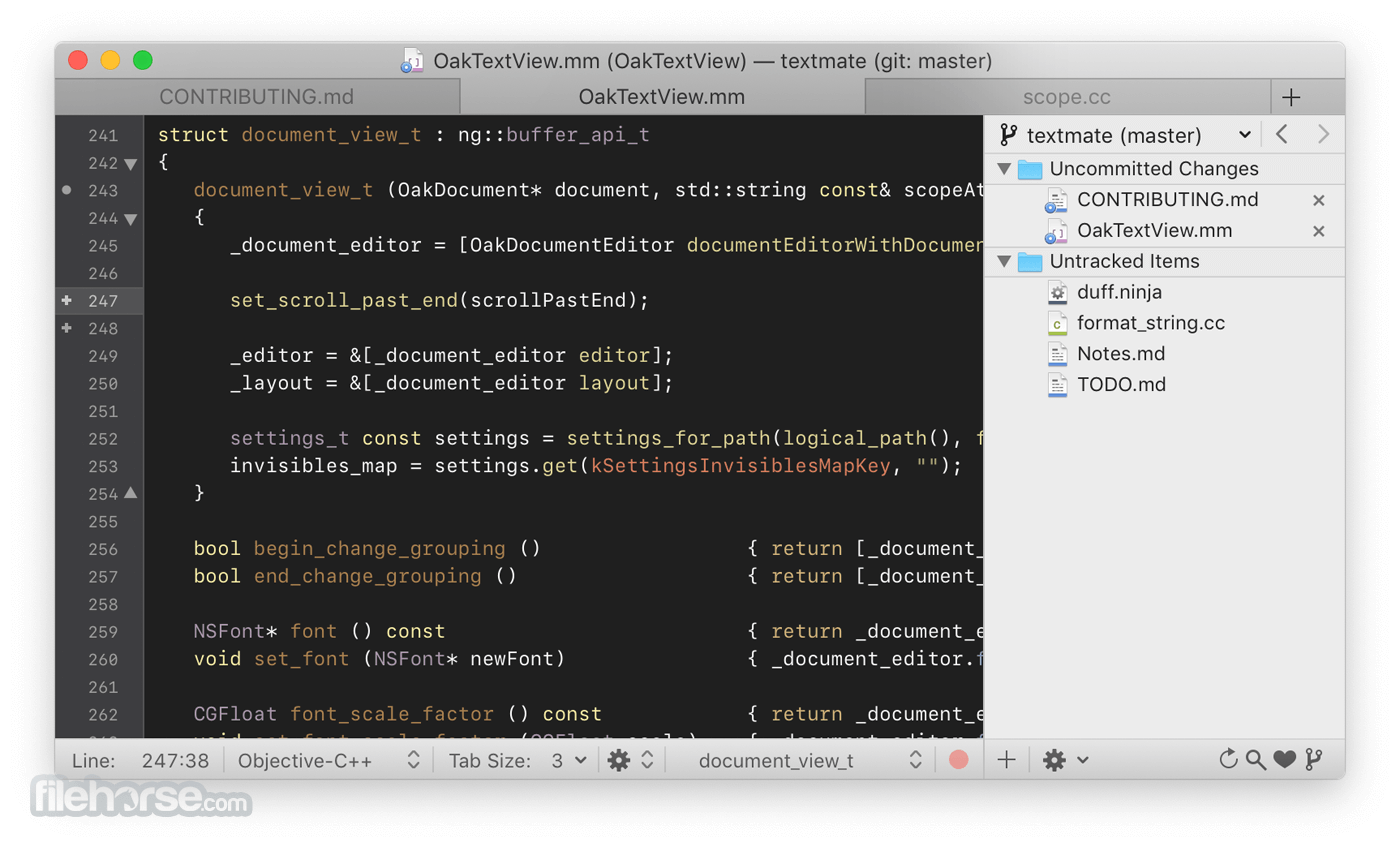

Over 2GB in memory is sitting around holding idle processes and cache data. In fact, just over half the actual memory in the machine is actively being used by processes - that's the '4.74G used' figure. (Sure, this indicates that the machine is running Tiger not Leopard, but the same principles hold true - much of the 7.7GB of 'used' memory is cached data.). Where you can see the machine has been running for 10 months.
Textmate meters free#
You might worry that the 343M free is too low, but it isn't. Top or Activity Monitor.app, both of which will show the breakdown of memory usage.įor example, here's an 8GB machine that is using memory very effectively: The best gauge of your memory usage is not Menu Meters, but either If you don't have enough memory for active processes then the OS will slow down significantly as it pages to disk, but at that point the cache isn't an issue anyway - you simply need more memory.
Textmate meters movie#
Maybe you have Final Cut Pro processing a 5 GB movie while you're downloading from the web, getting email while listening to iTunes. The only time this is a problem is when you need moreĪctive memory than you have in your machine. As soon as any app asks for more memory than is available the OS clears out the oldest cache items. This can't go on indefinitely, of course, so the OS keeps track of how much memory is unused and how much each application is asking for. Much of the data is being restored from the cache rather than read from disk. You'll find the second launch much, much faster - that is thanks to the cache. Time how long it takes to launch an application (any application) immediately after boot.
Textmate meters mac os x#
Whatever the reason, the fact that Mac OS X still has much of this data in cache means that you can reopen/relaunch documents and applications much, much faster. Maybe you quit Mail.app then realized you need to send one more email. It may be that you close a word processor document, only to realize you forgot to add a closing paragraph.

Why does it do this? Because it (and probably even you) don't know when you'll need that data again. As you work, launch applications, open documents, etc., the OS keeps much of that data in memory, even after the document has been saved to disk, and even after the application has quit. What's happening is that when you boot your system you have the maximum amount of memory available. The best way to think of it is "unused RAM = wasted RAM". What you're seeing is Mac OS X's caching at work. It's been discussed here and in other places many times. This is NOT a problem - at least not necessarily. on my coreduo macbook is takes 388megs to boot up, which is also (roughly) twice the amount from tiger. and "image capture extension" is taking up another 110megs!!! am i missing something here? i have three external harddrives, each connected via a different port (usb2, firewire400, firewire 800). the "massstorage" task is taking up a whopping 115megs! considering that it's not using any CPU time. i took a look at activity monitor and with "all processes" showing, i've noticed that the "kernal_task" is using approximately 430megs (before, it wouldn't reach past 200). switching over to leopard has quadrupled that to about 1.1gigs of RAM. cold booting tiger on this machine would average about 275megs of RAM being used.

i've got a 24" aluminum imac and did an "archive and install" option for leopard about a week ago. I was going to start a new thread about this, but decided to add to this one instead.


 0 kommentar(er)
0 kommentar(er)
